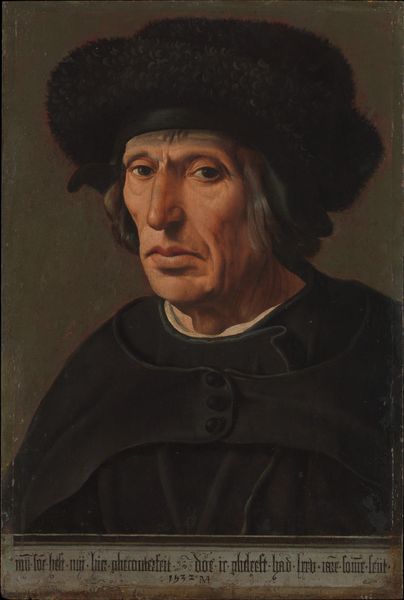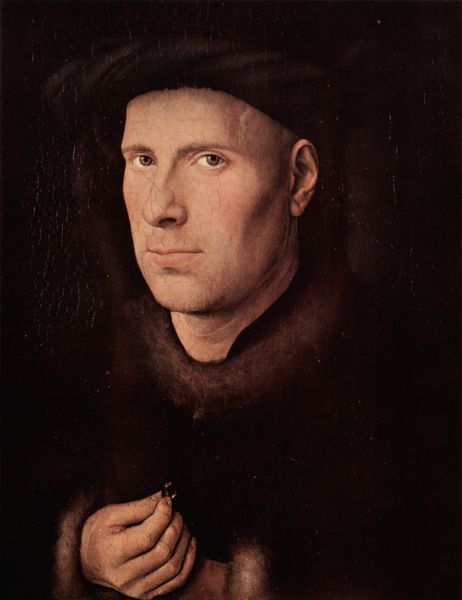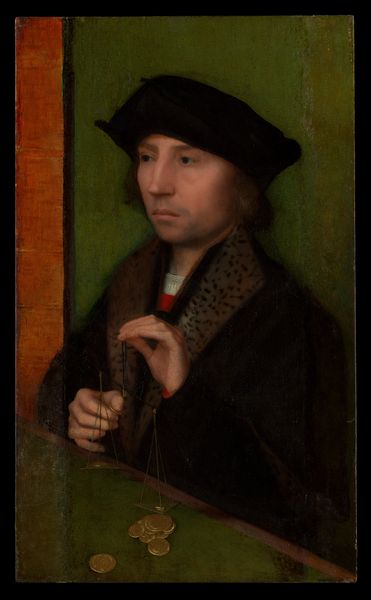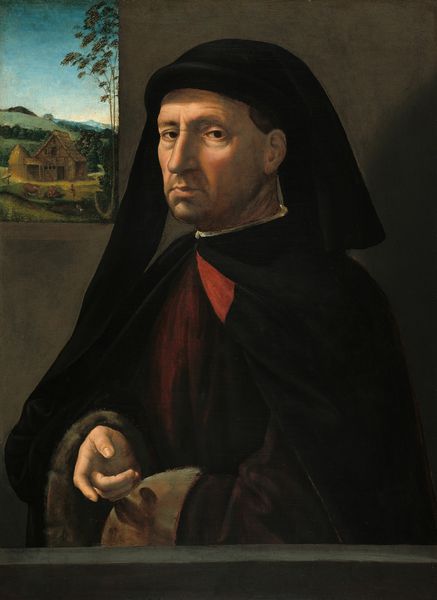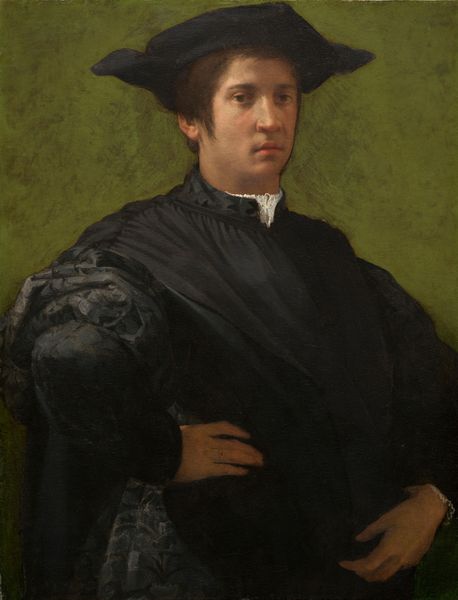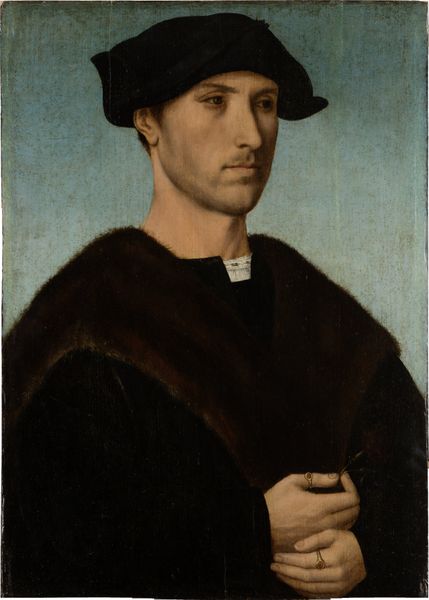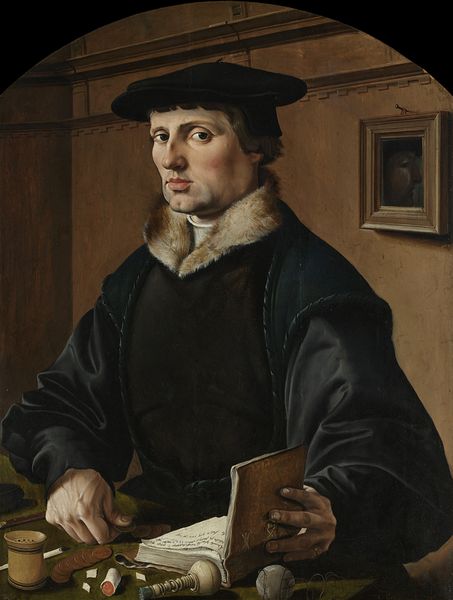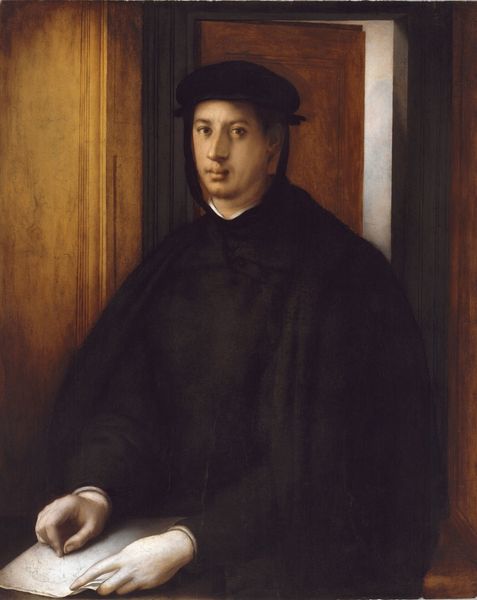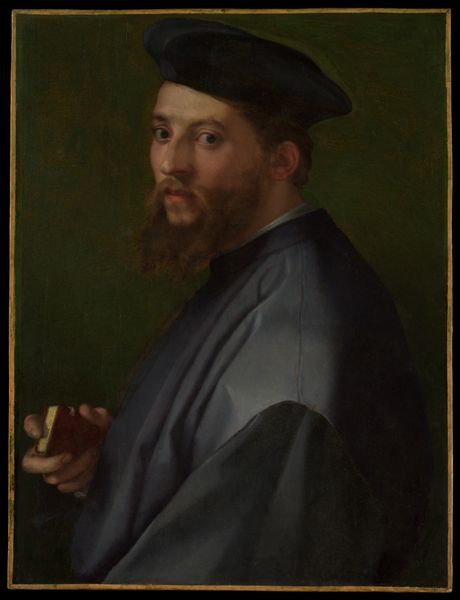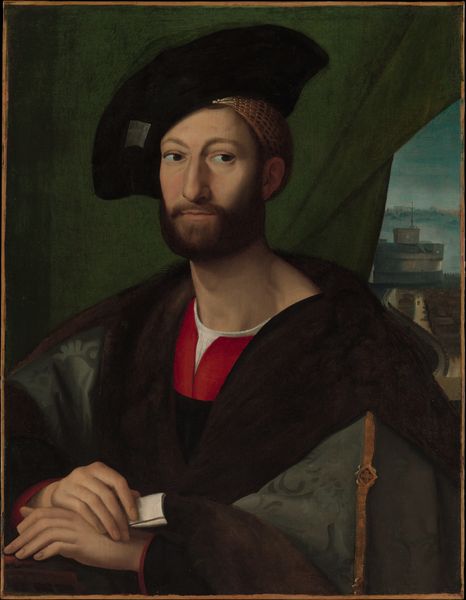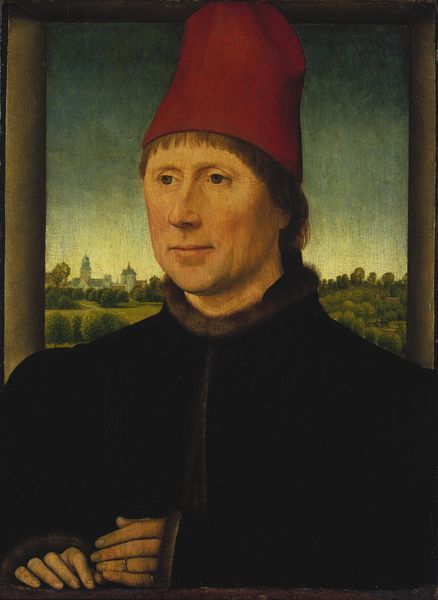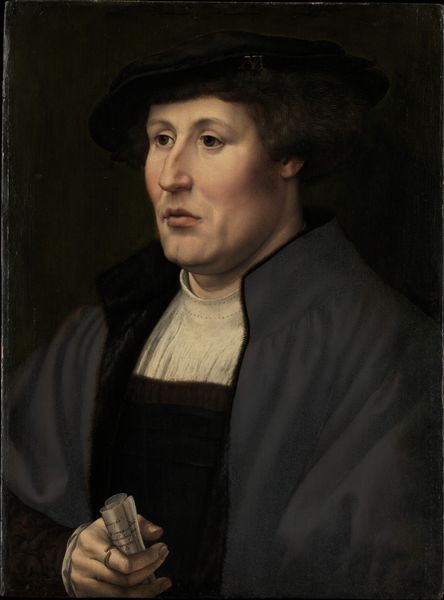
painting, oil-paint
#
portrait
#
painting
#
oil-paint
#
northern-renaissance
#
realism
Dimensions: support height 48.5 cm, support width 34.5 cm
Copyright: Rijks Museum: Open Domain
Curator: What strikes you first about this Jan van Scorel painting, titled "Portrait of a Haarlem Citizen," created around 1529? Editor: The austerity. Look at the somber palette, all earth tones and blacks. It feels like a conscious choice, reflective of a particular social climate. The materiality, in a way, enforces that reserved feel. Curator: The sitter's garments certainly hint at his status. The fur lining isn't merely warmth; it denotes prosperity and position. Clothing as a potent symbol. Consider how that translates across time; we still ‘read’ status through apparel, don't we? Editor: Absolutely. But how was that fur acquired, processed, and ultimately, displayed? It wasn't just ‘there’. I’m interested in that system, the work and resources tied up in what may seem like simple visual signifiers of status. What specific dyework was applied and how? That tells another story entirely. Curator: Indeed. It’s not solely about surface representation. The individual's gaze, downcast and introspective, also carries significance. A contemplative air was considered a sign of intellect, in this period, wasn’t it? This citizen perhaps reflects a deeper engagement with worldly affairs, but also an awareness of his place. Editor: Or, it could reflect the conditions of the commission. Think of the painter in relation to his patron—power dynamics shape material choices too! Who held sway in the studio, directing Van Scorel's labor to generate particular effects, like the stark realism of the skin tones? Curator: Fascinating how we arrive at divergent, yet connected viewpoints. I’m left thinking about how the portrait becomes a repository, a symbolic echo of social anxieties, desires, and, of course, memories—both individual and communal. Editor: Agreed. And I'm now mulling over just how *much* had to be spent for one individual to commission that specific painting at this particular moment. Every object carries the weight of how it comes into being and whose hands made it so.
Comments
rijksmuseum about 2 years ago
⋮
Jan van Scorel painted this refined portrait when he was working in Haarlem, so the man was probably a citizen of that town. The work illustrates the increasing interest in the individual in the early 16th century and reflects the growing self-confidence of ordinary townspeople.
Join the conversation
Join millions of artists and users on Artera today and experience the ultimate creative platform.
